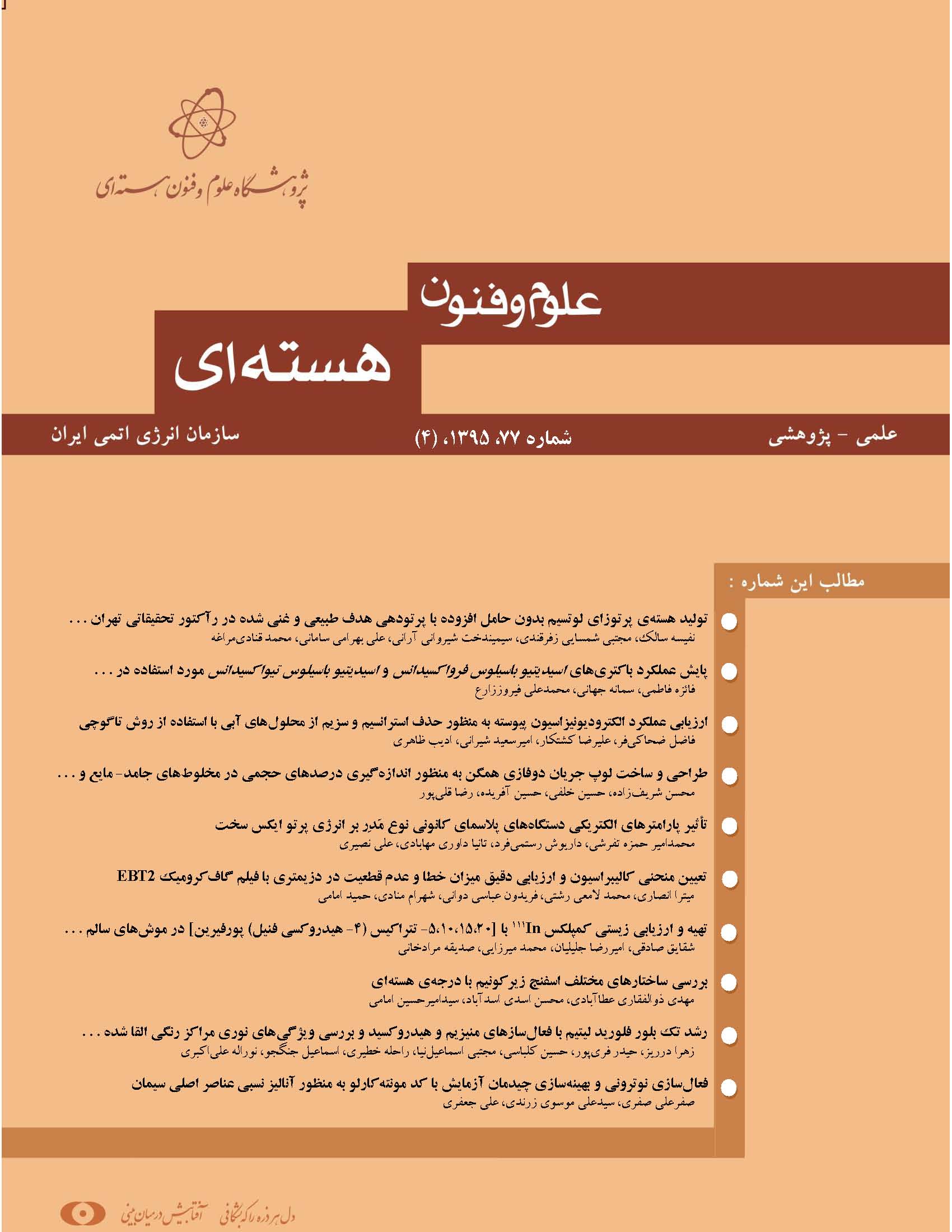نوع مقاله : مقاله پژوهشی
نویسندگان
1 پژوهشکدهی فیزیک و شتابگرها، پژوهشگاه علوم و فنون هستهای، سازمان انرژی اتمی ایران،
2 پژوهشکدهی گداخت هستهای، پژوهشگاه علوم و فنون هستهای
3 گروه فیزیک، دانشگاه پیام نور
چکیده
با تغییر در شکل هندسی دام و تأثیر نیروی میراکننده، نواحی پایداری اول و دوم در دام چهارقطبی کشیدهی پائول، بررسی شد. در این مقاله، منظور از تغییر در شکل هندسی دام، تغییر در فواصل بین الکترود حلقه (2r0) و الکترودهای کلاهک (2z0) است. برای این هدف،پارامتر2(z0/r0)=n در محاسبات وارد شد. همچنین، تأثیر نیروی میراکننده، با وارد کردن ثابت میرایی k در معادلهی ماتییو بررسی شد. دستگاه معادلات دیفرانسیل حاکم بر رفتار یون درون دام چهارقطبی با توجه به آثار همزمان نیروی میراکننده و هندسهی دام، در نظر گرفته شده است. این معادلات با استفاده از روش رونگه کوتای مرتبهی 5 و مرتبهی 6 ورنر (RKV56) به دقت محاسبه، و نواحی پایداری به دست آمده با نواحی پایداری در غیاب نیروی میراکننده در دام یونی ایدهآل (r02=2z02) مقایسه شده است. نتایج به دست آمده نشان میدهند که در یک دام یونی rf، نیروی میرایی و شکل هندسی دام، نقش تعیینکنندهای در جابهجایی نواحی پایداری دارند. یادآوری میشود که محاسبهی نواحی پایداری در حضور نیروی میراکننده با توجه به تغییر در فاصلهی بین الکترودهای کلاهک با این روش برای اولین بار گزارش میشود.
کلیدواژهها
عنوان مقاله [English]
Modification of the Stability Regions in Stretched Paul Ion Trap by Damping Force
نویسندگان [English]
- I Ziaeian 1
- S. M Sadat Kiai 2
- M Zebardast 3
- A. R Goosheh 3
چکیده [English]
With the change of an ion trap geometrical shape, ring and end-cap electrodes, and also damping force effects, the first and second stability regions are studied in a stretched Paul ion trap. In this article, according to a new idea, we changed the trap geometry based on the change in distances between the ring electrode (2r˳) and end-cap electrodes (2z˳). For this purpose, the geometrical parameter n=(r˳/z˳)2 was introduced in our calculations. Also, for the damping effects, we entered a viscous damping factor (k) in the Mathieu equation. The set of differential equation governing the motion of the confined ion is considered, taking into account the effect of damping force and the ion trap geometry. The Mathieu type differential equations were solved using Runge-Kutta Verner fifth-order and sixth-order method (RKV56). Comparisons were made with the corresponding stability diagrams without considering the effects of damping force in an ideal ion trap . The numerical results showed that, for a given ion trap mode i.e., rf only mode, the damping force and the trap geometry played important roles in the relocation of the stability diagrams. The first and second stability regions in the presence of the damping force, according to trap’s geometry, are reported for the first time.
کلیدواژهها [English]
- : Damping Force
- Trap Geometry
- Quadrupole Potential
- Runge-Kutta Verner

